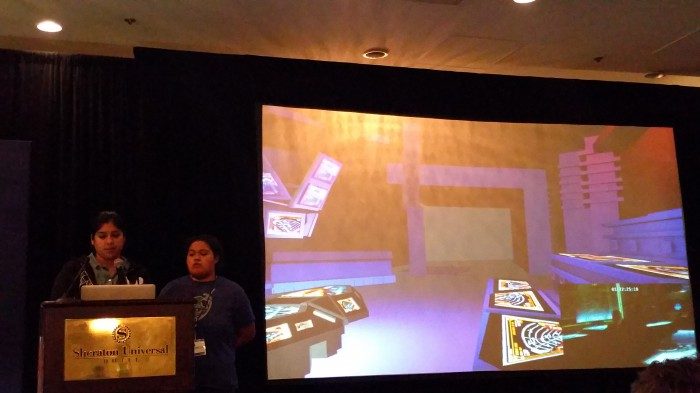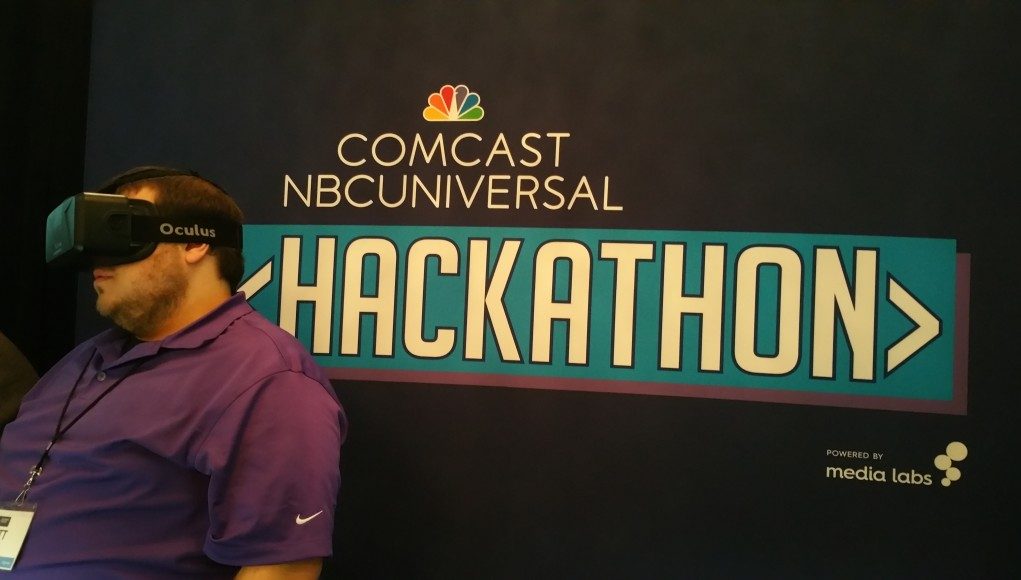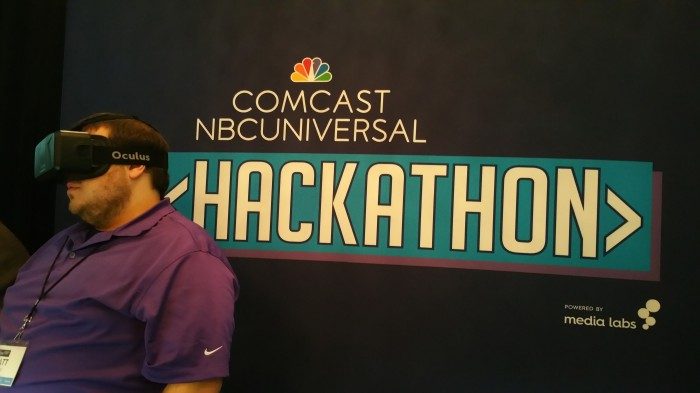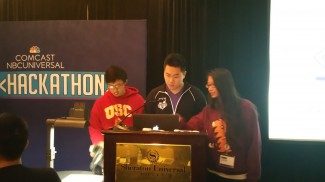A collection of virtual reality experiences were developed during a 24 hour coding marathon hosted by Comcast NBCUniversal in Hollywood earlier this month. We dropped in quickly after just getting back from the Samsung Developer Conference 2014 to investigate what was made.
See Also: 13 Samsung Gear VR Titles Shown at SDC 2014
The event was filled with enthusiastic developers, fuelled by Red Bull and coffee, all attempting to create fun, exciting interactive content that would hopefully catch the eyes of the judges.
Challenges were organized by sponsors that included several large media-related companies interested in what the local development community could put together in a day or so. Corporations like the movie ticketing platform Fandango, the American Spanish television network Telemundo, and the science fiction franchise Battlestar Galactica offered up cash and a variety of goodies for those who had the best ideas. The grand prize was $15,000 and the opportunity to pitch NBCUniversal Media Labs to continue development of the winning prototype.
As the NBCU Hackathon website notes, “over 150 developers presented close to 40 innovative, cross–platform solutions…”
The theme for the hackathon centered around the art of storytelling, for which the Oculus Rift and other VR headsets are increasingly being turned to as highly engaging tools for this purpose. Traditional media, such as websites and smartphone apps, engage people by providing a tangible way to interact with a story. But good VR elevates that experience with its superior levels of immersion. With this in mind, NBCUniversal provided five Oculus Rift DK2’s which could be used by developers to build their ideas.
As individuals started partnering up, three teams decide to utilize the potential of the Oculus Rift. They were joined by a team of mentors, also opting to build an experience in VR. The following is what those teams came up with:
Team Rules: Fast Oculus 7
This trivia VR game was developed by a group of University of Southern California students. The idea was to increase engagement with brands of television shows and films from Universal Pictures. The experience put individuals into a virtual room with red psychedelically patterned carpet. Various video clips played on the walls as questions appeared in front of the player which would ask general ‘What would you do if this happened?’ style scenarios.
What made this presentation great was that one of the team members actually wore the Oculus Rift while talking to the audience about the game. Talk about an easy way to get over stage anxiety—just strap on a headset and continue a conversation like no one is even there!
This particular demonstration centred on The Fast and the Furious, characters from which players were matched against according to their answers. The results could then be shared with friends online with a simple click of a button. Depending on who they were matched with, additional bonus clips and interviews of the actor who played the character would be projected onto the walls of the virtual room. This could be a fun and interactive way to encourage a user to learn more about a movie.
Return of the Cylons: Inside The Galactica

Two female fans produced an amazing ‘second-screen’ experience for the Battlestar Galactica series that puts the user inside the futuristic world of the show. Their demo was primarily developed for tablets but was Rift-enabled for extra interactivity. It was created in Unity and utilized the Watchwith API which brought in additional information about the television show.
Stepping inside this immersive experience could allow fans to feel like part of the show’s universe, rather than mere spectators.
As scenes progressed, character bios from the Battlestar Galactica wiki would pop-up giving more context to what was happening in the show. The space itself corresponds to where the characters are in the episode, so while they acted their parts, one can explore the corresponding virtual space.
One of the environments that was developed for the demo was a command center from one of the episodes. This essentially was a metaverse fan zone which could accessed by logging in through Facebook. Pockets of people could congregate and talk about various aspects of the show. They could then follow the story lines of the characters from there.
Another virtual scene created for this experience was a room with a wall of photos where individuals could post their pictures from social media so that others who entered the area could see what was left behind.

During the Q&A part of their presentation, Peter Marx (CIO of the city of Los Angeles, and one of the judges) asked, “what would you do if you had a show that was actually shot to be used in VR?” This got everyone in the room thinking, but no one had a defining answer. One of the members of the team spoke about the challenge of directing user attention in a made-for-VR episode. If a person can explore 360 degrees around them, then something has to happen to focus their attention on the action. This can include sound effects or certain visual clues to point their attention in the right direction.
The Inside The Galactica team won the Universal Cable Productions and Syfy Challenge which netted them $1,500 and a ticket for each team member to the shooting of of The Soup, starring Battlestar fan, Joel McHale.









